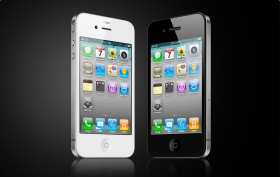 Apple products come in black, white—and green, says the company’s environmental Web page: “Apple reports environmental impact comprehensively. We do this by focusing on our products: what happens when we design them, what happens when we make them, and what happens when you take them home and use them.”
Apple products come in black, white—and green, says the company’s environmental Web page: “Apple reports environmental impact comprehensively. We do this by focusing on our products: what happens when we design them, what happens when we make them, and what happens when you take them home and use them.”
The company is paying attention to its total carbon footprint, something Apple estimated for the year 2010 to be approximately 14.8 million metric tons of greenhouse gas emissions. Apple understands that 98 percent of its carbon footprint is directly related to its products, which means adding up the emissions generated from the manufacturing, transportation, use, and recycling of its products, as well as the emissions generated by its facilities.
To improve the products’ performance, Steve Jobs led the development of smaller, thinner, and lighter products. But the products also were more eco-friendly. Example: Today’s 21.5-inch iMac is more powerful, with a much larger screen than the first-generation, 15-inch iMac, yet it has 50 percent less material and generates half the emissions. Another example: The iPad became 33 percent thinner and up to 15 percent lighter in one generation, generating five percent fewer carbon emissions.
The reduction in materials means less packaging, and at the end of the day, it also helps reduce the emissions produced during transportation. Apple gives a clear example for this in the packaging for the iPhone 4: It is 42 percent smaller than for the original iPhone shipped in 2007. That means that 80 percent more iPhone 4 boxes fit on each shipping pallet, more pallets fit on each boat and plane, and fewer boats and planes are used, resulting in fewer carbon emissions. This helps alleviate the greenhouse gas emissions from transporting Apple products, which accounts for six percent of the company’s carbon footprint.
Source : sierraclubgreenhome.com




































